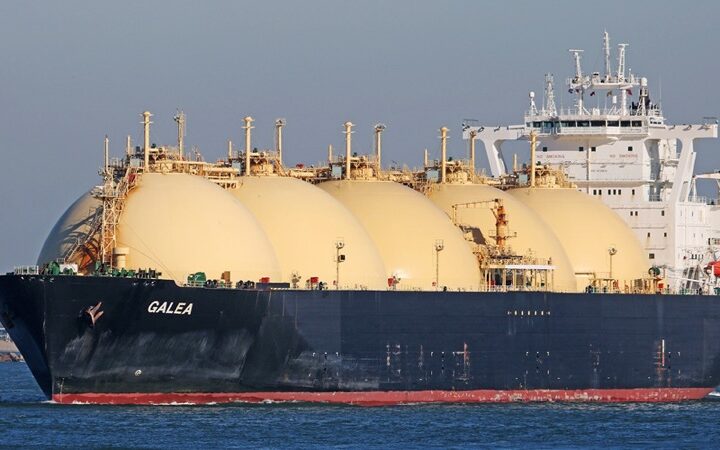.
Marcuard’s Market update by GaveKal Dragonomics
As China’s growth slowdown deepens, making even the government’s reduced growth target of 6.5% a year for the rest of this decade look less and less realistic, policymakers are increasingly pinning their hopes on Beijing’s much-touted “Belt and Road Initiative”.
Not only do they hope that the plan to build new trading networks across Central Asia and the Indian Ocean will boost China’s flagging exports, but that the demand for commodities and capital goods generated by the project will push up prices, rescuing China’s indebted industrial sector from debilitating producer price deflation, which in October was running at -5.9% year-on-year.
However, while we are cautiously optimistic about the benefits of the Belt and Road, the official rhetoric emanating from Beijing severely exaggerates the potential impact of President Xi Jinping’s grand project.
As we detail in the latest edition of the China Economic Quarterly, the Belt and Road envisages building roads, railways, pipelines and industrial corridors across some 67 countries, all linked to upgraded ports across Asia, the Middle East and Eastern Europe. It will require billions of tons of steel and cement, hundreds of thousands of workers, tens of thousands of cranes and diggers, and dozens of new dams, power stations and electricity grids. This explains why, far from being discouraged by China’s soft economy, Beijing is keen to press ahead.
The Belt and Road is China’s second big overseas investment push, following the “Go Out” policy launched in 1999. Then, the goal was for Chinese state enterprises to acquire overseas energy and mining assets. This time, the aim is to create new markets for Chinese construction firms and capital goods makers. Beijing portrays the plan as an international project, designed to create economic linkages across borders.
But there is a significant domestic component: every province in China has its own Belt and Road investment plan and for local governments looking to stimulate flagging growth, it makes sense to jump on the bandwagon.
Policymakers talk about the Belt and Road — short for the Silk Road Economic Belt and 21st Century Maritime Silk Road — as if they were clearly defined projects, but they are no such thing. What actually gets built will depend on individual deals struck between Chinese firms and their foreign partners. Because Chinese policy banks lend to their own, the biggest beneficiaries will be Chinese state-owned construction firms. But projects financed by the multilateral Asian Infrastructure Investment Bank will be open to competitive bidding, so there will also be opportunities for foreign construction firms and capital goods exporters.
Beijing has conjured up vast sums to support the Belt and Road: up to $100 bln for the AIIB, another $100 bln for the New Development Bank (formerly the BRICS Bank), and $40 bln for its Silk Road Fund. Yet we calculate that the working capital of these three new funds will actually be just $40 bln, one-sixth the headline figure. By the early 2020s, the AIIB and NDB combined will lend out at most $20 bln a year. Throw in the $2 bln or so in annual equity investments from the Silk Road Fund, and the projected annual flow from China’s three new finance entities will only be a quarter of global multilateral development finance.
The relatively modest scale of the new China-led multilaterals refutes US fears that China is building a credible alternative to the Bretton-Woods system. For the most part, these institutions will create more competition by stirring other lenders, such as Japan and the Asian Development Bank, into action. This might discomfit the incumbents, but that competition will be welcomed by borrowers looking for cheaper financing.
In truth, though, a lack of funds is not the root cause of Asia’s infrastructure deficit. The real problem is a shortage of bankable projects. The optimum level of infrastructure investment for any country depends on its potential growth rate, structure of growth, commodity prices and quality of governance. History is littered with examples of over-optimistic projections of future needs. China has plenty of cash, but it may struggle to find worthwhile projects to invest in.
There is much that can go wrong. Planners envisage the Belt and Road crossing some of the wildest terrain on earth, with investments in such volatile states as Syria, Iraq, Afghanistan, Pakistan, Yemen, Egypt and Ukraine.
Some projects will bolster China’s economic security or bring much-needed development to impoverished areas. Others will be about little more than geopolitical bribery, and will require policy banks to throw away money. And as Chinese firms have already found to their cost in Africa, Myanmar and Sri Lanka, such investments can backfire.
Even so, the Belt and Road is a bold strategy that must be taken seriously. It may prove a useful long-term stimulus in underdeveloped markets that badly need better infrastructure. But the sums involved are probably neither sufficient to save Chinese industries suffering from overcapacity nor large enough to pull commodity prices out of the gutter.
It is a light in the darkness, but the gloom remains.







